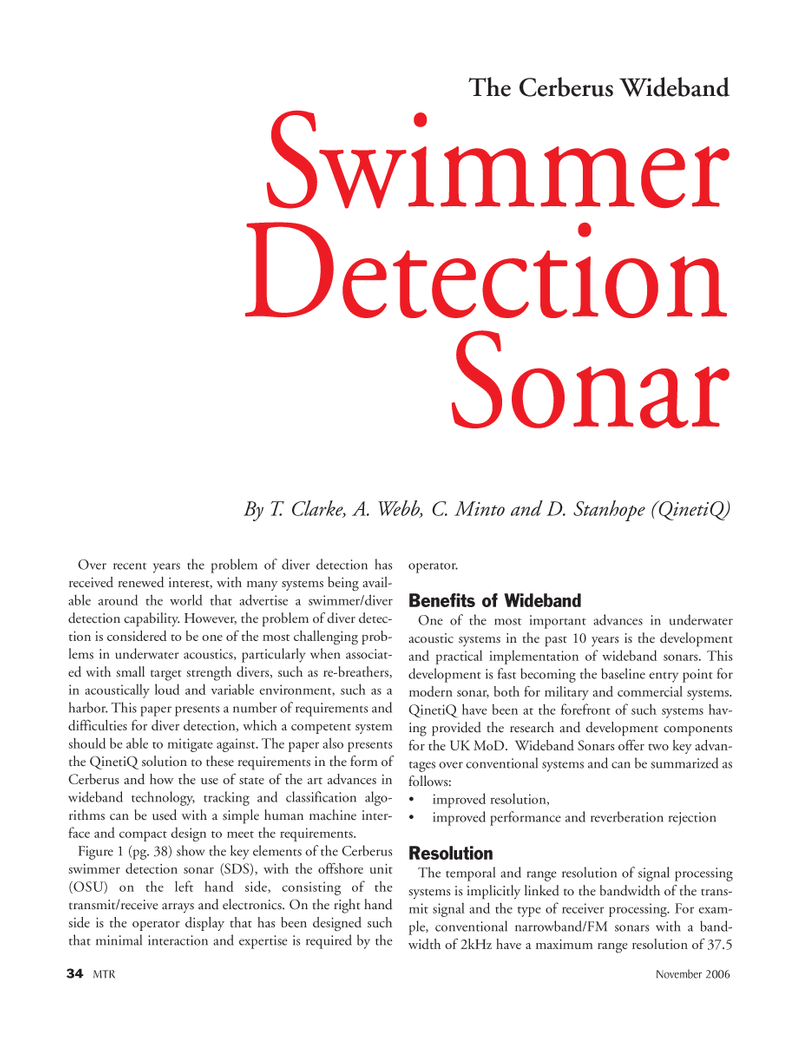
Page 34: of Marine Technology Magazine (November 2006)
Deep Ocean Exploration
Read this page in Pdf, Flash or Html5 edition of November 2006 Marine Technology Magazine
Over recent years the problem of diver detection has received renewed interest, with many systems being avail- able around the world that advertise a swimmer/diver detection capability. However, the problem of diver detec- tion is considered to be one of the most challenging prob- lems in underwater acoustics, particularly when associat- ed with small target strength divers, such as re-breathers, in acoustically loud and variable environment, such as a harbor. This paper presents a number of requirements and difficulties for diver detection, which a competent system should be able to mitigate against. The paper also presents the QinetiQ solution to these requirements in the form of
Cerberus and how the use of state of the art advances in wideband technology, tracking and classification algo- rithms can be used with a simple human machine inter- face and compact design to meet the requirements.
Figure 1 (pg. 38) show the key elements of the Cerberus swimmer detection sonar (SDS), with the offshore unit (OSU) on the left hand side, consisting of the transmit/receive arrays and electronics. On the right hand side is the operator display that has been designed such that minimal interaction and expertise is required by the operator.
Benefits of Wideband
One of the most important advances in underwater acoustic systems in the past 10 years is the development and practical implementation of wideband sonars. This development is fast becoming the baseline entry point for modern sonar, both for military and commercial systems.
QinetiQ have been at the forefront of such systems hav- ing provided the research and development components for the UK MoD. Wideband Sonars offer two key advan- tages over conventional systems and can be summarized as follows: • improved resolution, improved performance and reverberation rejection
Resolution
The temporal and range resolution of signal processing systems is implicitly linked to the bandwidth of the trans- mit signal and the type of receiver processing. For exam- ple, conventional narrowband/FM sonars with a band- width of 2kHz have a maximum range resolution of 37.5 34 MTR November 2006
The Cerberus Wideband
Swimmer
Detection
Sonar
By T. Clarke, A. Webb, C. Minto and D. Stanhope (QinetiQ)
MTR#9 (33-48).qxd 11/13/2006 4:34 PM Page 34

 33
33

 35
35
